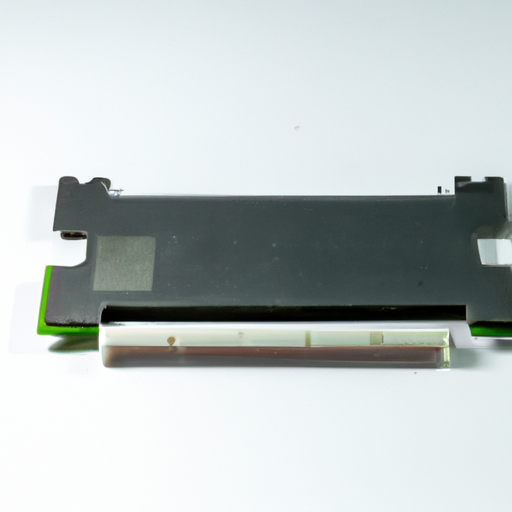Parallel ports have been a staple in the world of computing for many years, providing a way to connect printers, scanners, and other devices to a computer. However, with the advancement of technology, the manufacturing processes for parallel ports have also evolved to keep up with the demands of modern computing.
enter;margin:5px 0;'>

One of the latest manufacturing processes for parallel ports involves the use of surface mount technology (SMT). SMT is a method of manufacturing electronic circuits in which the components are mounted directly onto the surface of the printed circuit board (PCB). This allows for a more compact and efficient design, as well as improved performance and reliability.
In the past, parallel ports were typically manufactured using through-hole technology, where the components were inserted into holes drilled in the PCB and soldered in place. While through-hole technology is still used in some applications, SMT has become the preferred method for manufacturing parallel ports due to its many advantages.
One of the key benefits of SMT is its ability to reduce the size of the parallel port, making it more compact and lightweight. This is especially important in today's mobile computing devices, where space is at a premium. By using SMT, manufacturers can create parallel ports that are smaller and more streamlined, without sacrificing performance or functionality.
In addition to size reduction, SMT also offers improved performance and reliability. The components in an SMT parallel port are mounted directly onto the surface of the PCB, which reduces the length of the electrical paths and minimizes signal loss. This results in faster data transfer speeds and more reliable connections, making SMT parallel ports ideal for high-performance computing applications.
Another advantage of SMT manufacturing processes for parallel ports is their cost-effectiveness. SMT allows for automated assembly of components, which reduces labor costs and increases production efficiency. This makes SMT parallel ports more affordable to manufacture, without compromising on quality or performance.
To further enhance the performance and reliability of parallel ports, manufacturers are also incorporating advanced materials and coatings into their manufacturing processes. For example, some parallel ports are now being made with gold-plated connectors, which provide better conductivity and corrosion resistance. This ensures a more stable and reliable connection between the parallel port and the connected device, even in harsh environments.
Overall, the latest manufacturing processes for parallel ports are focused on improving performance, reliability, and cost-effectiveness. By using SMT technology, advanced materials, and coatings, manufacturers are able to create parallel ports that are smaller, faster, and more reliable than ever before. These advancements are essential for meeting the demands of modern computing and ensuring that parallel ports remain a vital component in the world of technology.
Parallel ports have been a staple in the world of computing for many years, providing a way to connect printers, scanners, and other devices to a computer. However, with the advancement of technology, the manufacturing processes for parallel ports have also evolved to keep up with the demands of modern computing.
enter;margin:5px 0;'>

One of the latest manufacturing processes for parallel ports involves the use of surface mount technology (SMT). SMT is a method of manufacturing electronic circuits in which the components are mounted directly onto the surface of the printed circuit board (PCB). This allows for a more compact and efficient design, as well as improved performance and reliability.
In the past, parallel ports were typically manufactured using through-hole technology, where the components were inserted into holes drilled in the PCB and soldered in place. While through-hole technology is still used in some applications, SMT has become the preferred method for manufacturing parallel ports due to its many advantages.
One of the key benefits of SMT is its ability to reduce the size of the parallel port, making it more compact and lightweight. This is especially important in today's mobile computing devices, where space is at a premium. By using SMT, manufacturers can create parallel ports that are smaller and more streamlined, without sacrificing performance or functionality.
In addition to size reduction, SMT also offers improved performance and reliability. The components in an SMT parallel port are mounted directly onto the surface of the PCB, which reduces the length of the electrical paths and minimizes signal loss. This results in faster data transfer speeds and more reliable connections, making SMT parallel ports ideal for high-performance computing applications.
Another advantage of SMT manufacturing processes for parallel ports is their cost-effectiveness. SMT allows for automated assembly of components, which reduces labor costs and increases production efficiency. This makes SMT parallel ports more affordable to manufacture, without compromising on quality or performance.
To further enhance the performance and reliability of parallel ports, manufacturers are also incorporating advanced materials and coatings into their manufacturing processes. For example, some parallel ports are now being made with gold-plated connectors, which provide better conductivity and corrosion resistance. This ensures a more stable and reliable connection between the parallel port and the connected device, even in harsh environments.
Overall, the latest manufacturing processes for parallel ports are focused on improving performance, reliability, and cost-effectiveness. By using SMT technology, advanced materials, and coatings, manufacturers are able to create parallel ports that are smaller, faster, and more reliable than ever before. These advancements are essential for meeting the demands of modern computing and ensuring that parallel ports remain a vital component in the world of technology.
